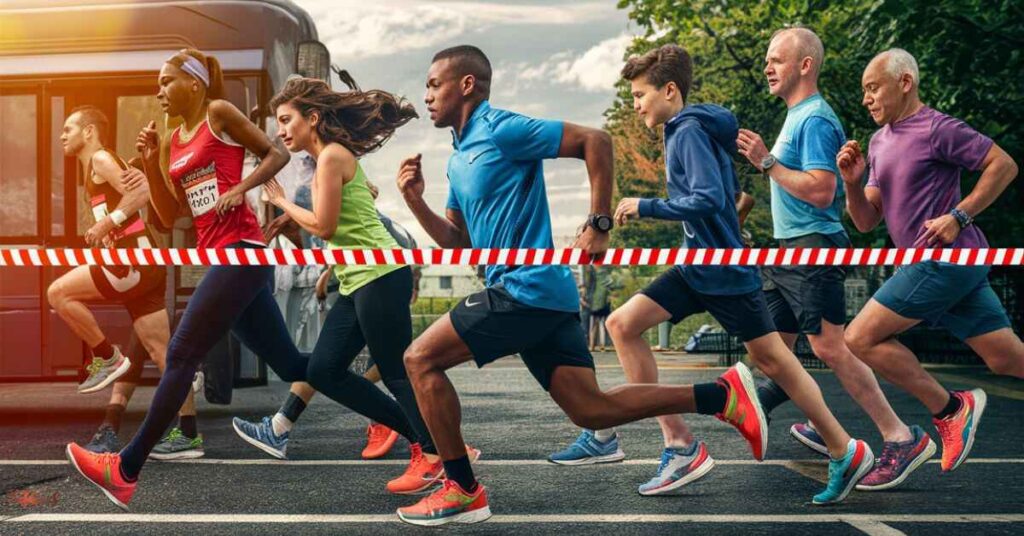Running shoes are essential for comfortable and efficient running. They provide cushioning, support and stability, reducing the risk of injuries. Different types of running shoes are designed for various purposes, such as road running, trail running and racing.
Choosing the right running shoes depends on factors like your running style, foot shape and the terrain you run on. Properly fitting shoes can enhance performance and prevent discomfort during workouts. Let’s explore what running shoes are best for.
What Are Training Shoes?
Training shoes are versatile footwear designed for various workouts and activities. They offer cushioning and support for running, jumping and lateral movements. Unlike specialized shoes like running or weightlifting shoes, training shoes are multipurpose and suitable for a range of exercises.
They provide stability and flexibility, aiding in proper form and reducing the risk of injuries. Training shoes are ideal for gym sessions, cross-training, HIIT workouts, and other dynamic training routines. They offer comfort, durability and performance for all-around fitness activities.
How Should Training Shoes Fit?
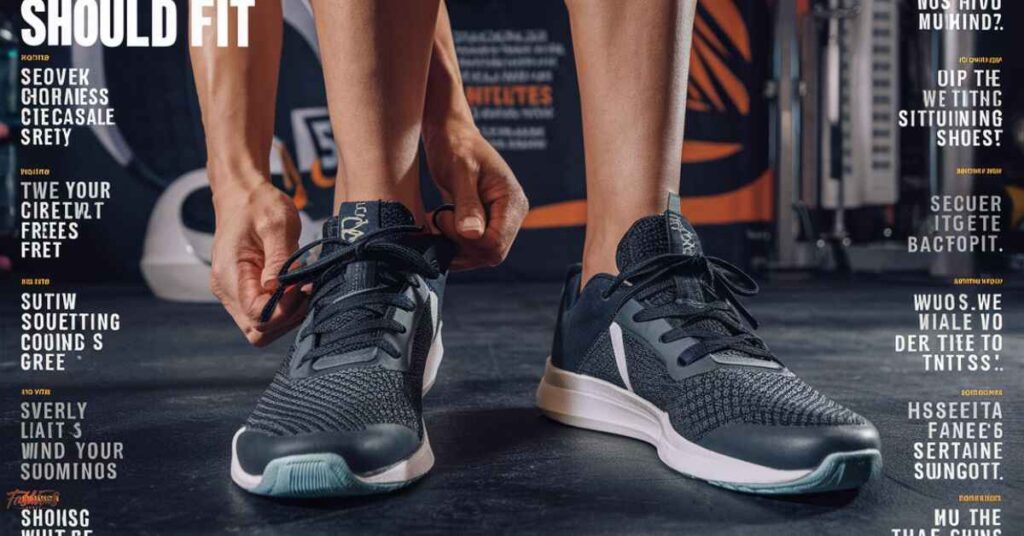
- Training shoes should fit snugly but not too tight.
- Your toes should have some room to wiggle.
- Check for enough space in the toe box.
- Ensure your heel stays secure without slipping.
- The arch of your foot should align with the shoe’s arch support.
- Walk or jog in the shoes to assess comfort.
- Look for any rubbing or pressure points.
- Consider trying different sizes or widths if needed.
- Wear socks similar to those you’ll use during workouts.
- Consult a shoe specialist for guidance if unsure.
What Are Cross-Training Shoes?
Cross-training shoes are versatile footwear designed for various activities like gym workouts, fitness classes and cross-training exercises. They offer cushioning and support for multidirectional movements, including lateral, forward and jumping motions.
Unlike specialized shoes like running or weightlifting shoes, cross-training shoes provide a balance of stability, flexibility, and durability. They typically feature a sturdy sole, adequate arch support and reinforced toe areas to withstand different workout intensities.
Cross-training shoes are ideal for individuals engaged in diverse fitness routines, offering comfort, protection and performance across a range of exercises.
What Is the Difference Between Training and Running Shoes?
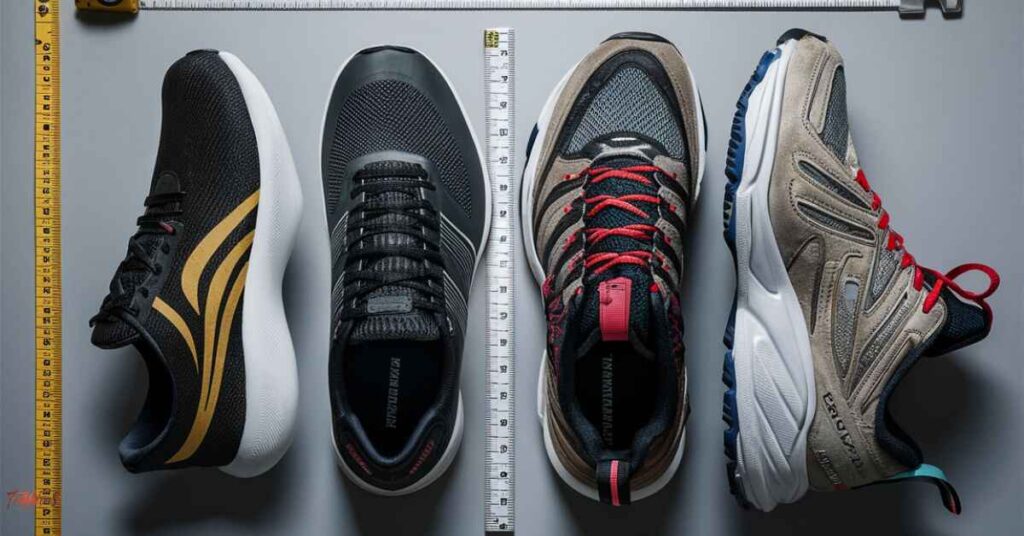
| Aspect | Training Shoes | Running Shoes |
| Purpose | Versatile for gym workouts, cross-training, fitness classes | Specifically designed for running and races |
| Cushioning | Balanced cushioning for various movements | Impact-absorbing cushioning for forward motion |
| Support | Provides lateral support and stability | Focuses on stability and alignment during runs |
| Flexibility | Offers flexibility for multidirectional movements | Designed for forward motion with some flexibility |
| Sole | Typically sturdy with good grip | Lighter and more flexible for running efficiency |
| Heel Drop | Moderate heel drop for stability | Varies based on running style (neutral, stability, etc.) |
| Durability | Designed to withstand gym equipment and diverse workouts | Built for repeated impact from running |
| Arch Support | Provides moderate arch support | Offers different levels of arch support based on shoe type |
| Toe Box | Reinforced toe area for durability | Roomier toe box to accommodate foot swelling during runs |
Are Running Shoes Good for Training?
Running shoes can be suitable for certain types of training but may not be ideal for all activities. They are specifically designed for running and provide features like cushioning, support and stability tailored for forward motion.
However, for activities involving lateral movements, jumping and weightlifting, running shoes may lack the necessary support and stability. Cross-training shoes are better suited for diverse workouts. They offer a balance of cushioning, support and flexibility for multidirectional movements.
It’s essential to choose footwear that matches the demands of your training routine to ensure comfort, performance and injury prevention.
Can Training Shoes Be Used for Walking?
Yes, training shoes can be used for walking. They offer cushioning and support suitable for walking activities. However, it’s essential to ensure that the shoes provide enough comfort and stability for prolonged walking.
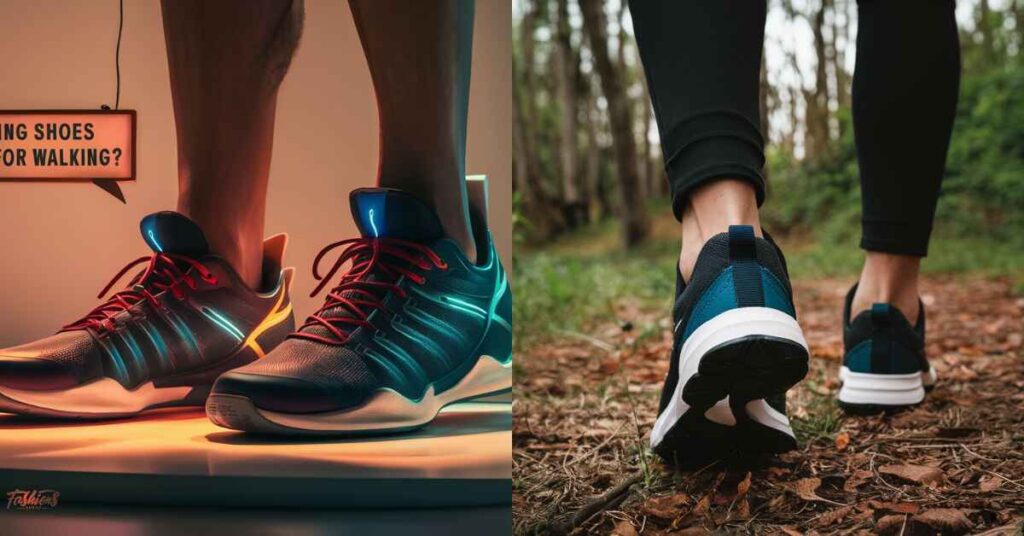
Consider factors like cushioning, arch support and overall fit to ensure a comfortable walking experience. While training shoes are versatile, specialized walking shoes may offer additional features tailored specifically for walking, such as enhanced shock absorption and improved traction.
Ultimately, choose shoes that feel comfortable and supportive for your walking needs to promote foot health and overall comfort.
Sneakers?
Certainly! Sneakers, also known as athletic shoes or trainers, are versatile footwear designed for sports, exercise and casual wear. They typically feature rubber soles for traction and cushioning to absorb impact during physical activities.
Sneakers come in various styles, including low-tops, high-tops and slip-ons, catering to different preferences and needs. They are popular for their comfort, durability and style, making them a go-to choice for everyday wear and active lifestyles.
Sneakers are available in a wide range of colors, designs and materials, allowing individuals to express their personal style while staying comfortable and supported.
Read this blog: 11 Trendy Boys Mullet Haircut Ideas For 2024
When to Wear Training Shoes?
You should wear training shoes when engaging in gym workouts, fitness classes or cross-training exercises. They provide cushioning, support, and stability for various movements. Training shoes are also suitable for activities like HIIT workouts, agility training and weightlifting, offering the versatility needed for dynamic workouts.
Additionally, wear training shoes for outdoor activities like walking, hiking or light running, where you need comfortable and supportive footwear. It’s essential to choose the right shoes based on your activity to ensure comfort, performance and injury prevention.
What to Look for in a Running Shoes?
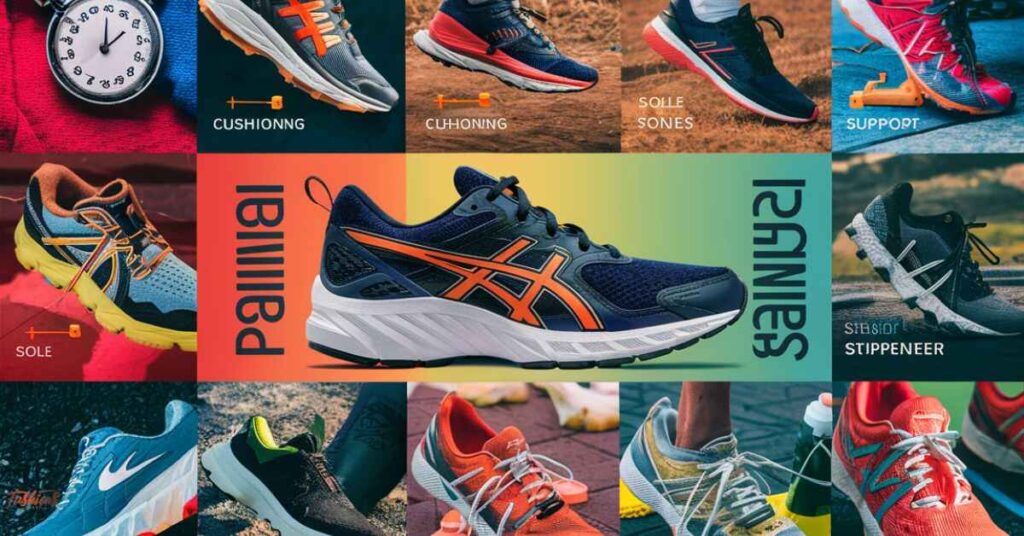
Proper Fit and Sizing
Ensure the shoes fit comfortably and securely, considering your foot shape and support needs.
Cushioning
Look for adequate cushioning to absorb impact and reduce strain on your joints while running.
Breathability
Choose shoes with good breathability to keep your feet cool and dry during workouts.
Durable Outsole
Prioritize shoes with a durable outsole for traction and grip on various surfaces.
Weight
Consider the weight of the shoes, opting for a balance between lightweight design and necessary features.
Stability Features
Select shoes with stability features that match your running style and support requirements.
Flexibility
Ensure the shoes offer sufficient flexibility to accommodate your foot’s natural movement while running.
Expert Guidance
Consult with shoe specialists or try on multiple pairs to find the best fit for your feet and running goals.
Features and Benefits of Running Shoes
| Feature | Description | Benefit |
| Cushioning | Provides impact absorption for reduced strain on joints | Enhances comfort and reduces the risk of injuries during runs |
| Breathability | Mesh or breathable materials for airflow | Keeps feet cool, dry, and comfortable during longer runs |
| Supportive Midsole | Offers arch support and stability | Improves running form, reduces overpronation, and prevents foot fatigue |
| Durable Outsole | High-quality rubber for grip and traction | Provides reliable traction on various surfaces, ensuring a secure stride |
| Lightweight Design | Minimal weight for agility and speed | Reduces fatigue and allows faster running |
| Reflective Details | Reflective elements for visibility in low-light conditions | Increases safety during early morning or evening runs |
| Pronation Control | Different models for neutral, overpronation, or underpronation | Promotes proper foot alignment and reduces the risk of overuse injuries |
| Waterproofing | Water-resistant materials or treatments | Keeps feet dry and comfortable in wet or rainy conditions |
| Customizable Fit | Adjustable lacing systems or customizable insoles | Allows for a personalized and comfortable fit, reducing discomfort |
| Shock Absorption | Specialized cushioning in the heel or forefoot | Absorbs impact forces, protecting joints and muscles from excessive stress |
Also read: What Is Brighton Jewelry Made Of
What Happens If You Use the Wrong Shoes for Running?
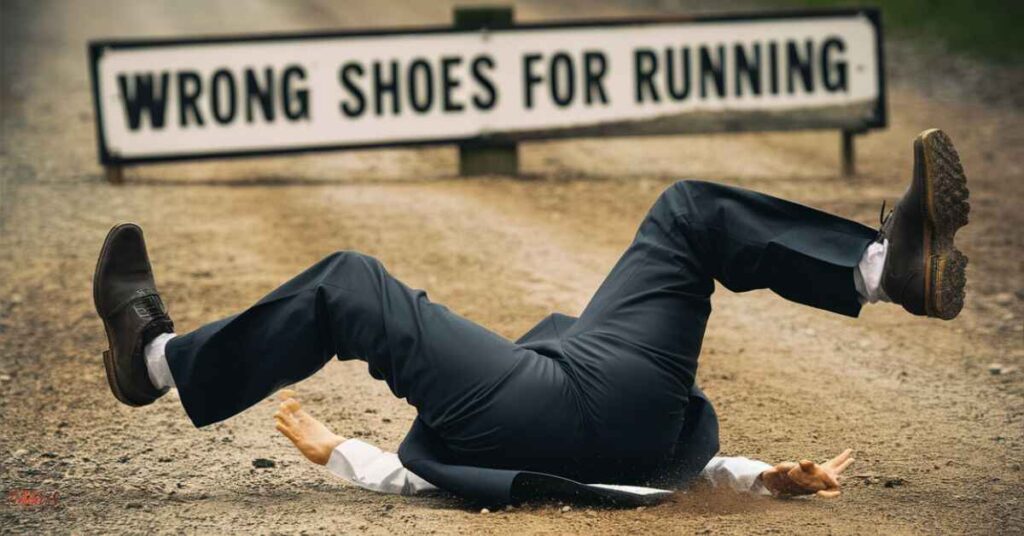
Discomfort
Using the wrong shoes for running can lead to discomfort such as blisters, hot spots and soreness. Fitting shoes may rub against your skin or cause pressure points, making your running experience unpleasant.
Reduced Stability
Incorrect shoes can compromise your stability while running. This may result in wobbling, uneven strides or difficulty maintaining balance, increasing the risk of falls or injuries.
Lowered Performance
Improper footwear can hamper your running performance. It may affect your stride efficiency, speed and overall running form, leading to suboptimal results in terms of pace and endurance.
Failing to Achieve Your Goals
Using the wrong shoes may hinder your progress toward running goals. Whether it’s distance milestones, speed improvements or form corrections, inadequate footwear can impede your ability to achieve desired outcomes.
Injuries
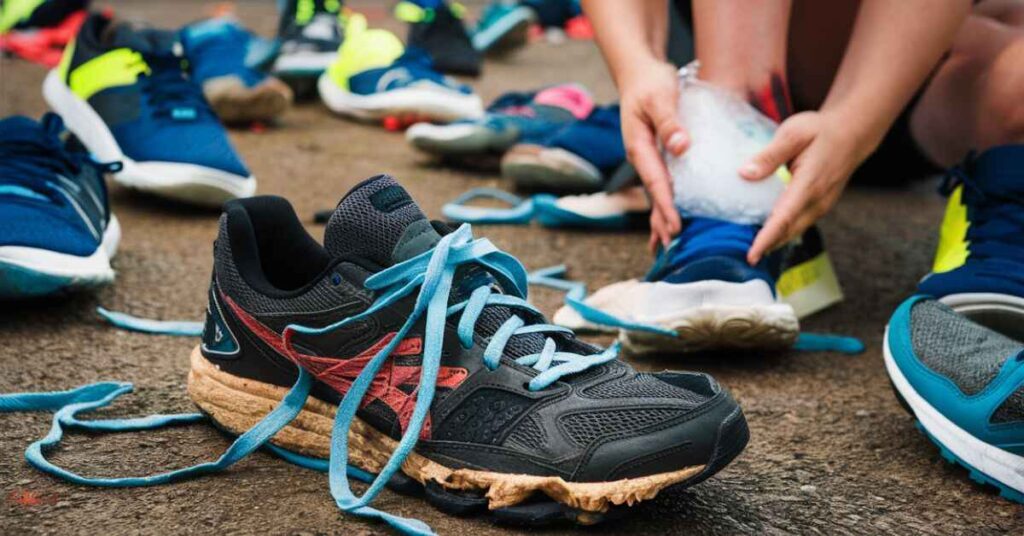
One of the most significant risks of using the wrong shoes is an increased likelihood of injuries. Improper support, cushioning, or alignment from shoes can lead to shin splints, plantar fasciitis, stress fractures, or joint pain. These conditions can result from wearing shoes that don’t offer adequate protection or support for your feet.
Frequently asked questions
Can I use training shoes for running?
Training shoes can be used for running, but they lack specialized features for optimal running comfort and performance.
Can training shoes be used for everyday use?
Yes, training shoes can be used for everyday activities due to their comfort, versatility and support for various movements.
Are training shoes meant for walking?
Yes, training shoes can be suitable for walking due to their cushioning, support and comfort features designed for various movements.
Do I need running or training shoes?
If you primarily run, opt for running shoes for optimal cushioning and support. Training shoes are versatile for various workouts and activities.
Which type of shoe is best for gym?
Training shoes are the best choice for the gym due to their versatility, offering cushioning, support and stability for various exercises.
Conclusion
Choosing the right shoes is crucial for comfort, performance and injury prevention during workouts. Running shoes are ideal for dedicated running activities, providing specialized cushioning and support tailored for forward motion. Training shoes are versatile for gym exercises, providing adequate cushioning, stability and flexibility. They ensure comfort and support for dynamic movements during workouts.
It’s essential to consider your specific activities and foot needs when selecting between running and training shoes. If running is your main activity, choose running shoes. Training shoes work well for gym workouts, cross-training and diverse exercises. Prioritize comfort, support and durability to maximize your fitness experience and achieve your workout goals effectively.

